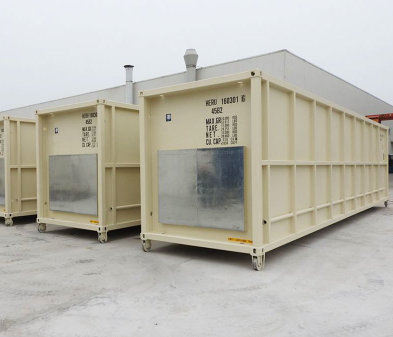
Silo containers can indeed play a significant role in streamlining warehouse operations. Silo containers are large, vertical storage units that are designed to hold bulk materials. They are commonly used in industries such as agriculture, food processing, and manufacturing.
There are several reasons why silo containers can be the key to streamline warehouse operations. Firstly, silo containers provide efficient and organized storage. Traditional storage methods often involve using various types of containers or stacking pallets, which can be time-consuming and require a lot of space. In contrast, silo containers are designed to maximize storage capacity and utilize vertical space efficiently. They have a smaller footprint compared to other storage methods, allowing warehouses to store more items in a limited area.
Moreover, silo containers enable better inventory management. With silo containers, it becomes easier to track and manage the quantity and availability of stored materials. Many silo containers come with sensors or monitoring systems that provide real-time data on the level of materials inside. This information can be integrated into warehouse management systems, helping warehouse managers to keep track of stock levels and plan their operations more effectively. It reduces the chances of stockouts or excess inventory, leading to improved productivity and cost savings.
Additionally, using silo containers reduces the need for manual handling of materials. Traditional storage methods often involve manual loading and unloading of pallets or containers, which can be physically demanding and time-consuming. Silo containers, on the other hand, typically have built-in mechanisms such as augers, conveyors, or pumps that automate the transfer and distribution of materials. This automation reduces the reliance on manual labor, minimizes the risk of accidents or injuries, and improves overall efficiency in warehouse operations.
Furthermore, silo containers facilitate better organization and accessibility of materials. Silo containers are designed with different compartments or sections, allowing for the separation and classification of different types of materials. This makes it easier for warehouse staff to locate specific items whenever they are needed, reducing the time and effort required for picking and packing. Silo containers also often feature mechanisms for easy loading and unloading, such as hatches or valves that can be opened or closed as needed. This promotes faster and more efficient material flow within the warehouse.
Lastly, silo containers can help optimize the transportation and logistics processes. The standardized size and shape of silo containers make them suitable for intermodal transportation, including truck, rail, and ship. This means that materials can be directly stored and transported in the same containers, minimizing the need for repackaging or transferring between different types of containers. By eliminating these steps, the time, cost, and potential damage associated with handling materials during transportation can be reduced. It contributes to a more streamlined and efficient supply chain.
In conclusion, silo containers can be the key to streamlining warehouse operations due to their efficient and organized storage, effective inventory management, reduced manual handling, improved material organization and accessibility, and optimized transportation and logistics processes. By adopting silo containers, warehouses can enhance productivity, reduce costs, improve safety, and ultimately achieve greater operational efficiency.




ความคิดเห็น
(0)